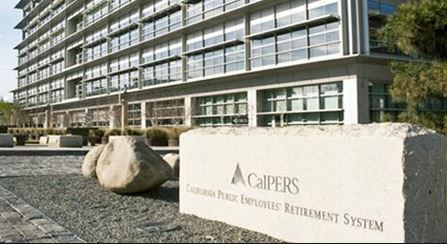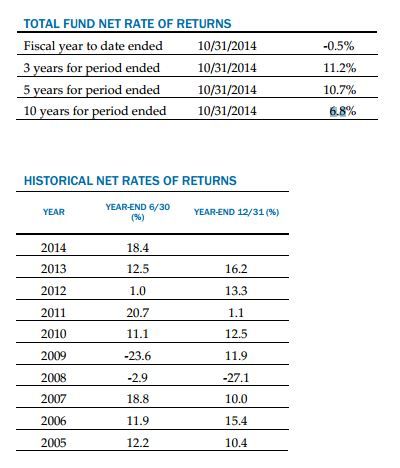State pensions improve, but members living longer
by Wayne Lusvardi | January 26, 2015 4:58 pm
 Is it morning in California for the California Public Employees’ Retirement System and the California State Teachers’ Retirement System?
Is it morning in California for the California Public Employees’ Retirement System and the California State Teachers’ Retirement System?
Both CalPERS and CalSTRS’ funds have performed better lately, even as members are living longer. CalPERS is doing much better since 2008, when it lost 27.8 percent[1] of the value of its investment portfolio as the Great Recession struck hard. According to its latest Comprehensive Annual Report[2], it has enjoyed double-digit positive returns for four out of the last five years, with an 18.4 percent boost in 2014.
For the fiscal year ending June 30, 2014, its fund grew 7 percentage points in a year, to an “estimated funding level of 77 percent,” which is close to the 80 percent investment advisers consider the minimum for a fiscally sound retirement fund.
For CalSTRS, the funding level was 67 percent as of June 30, 2013[3]. Its next annual report will be out in April.
CalSTRS also is worse off because it concedes [4]a “$74 billion unfunded liability,” a number cited in the governor’s budget proposal (p. 4).[5] By contrast, CalPERS has only $530 million in “deferred payments.”
The governor’s budget also brings up the current costs of both of these funds (p. 132). Money going to them means less for schools, roads and the poor:
- “The Budget includes $1.9 billion General Fund in 2015‑16 for CalSTRS. The funding strategy positions CalSTRS on a sustainable path forward, eliminating the unfunded liability in about 30 years.”
- “The Budget includes $5 billion ($2.9 billion General Fund) in 2015‑16 for state contributions to CalPERS for state pension costs. These costs include the impact of the demographic assumptions adopted by the CalPERS Board in February 2014, which reflect a mortality increase of 2.1 years for males and 1.6 years for females.”
Returns
Both CalPERS[6] and CalSTRS[7] predicate the sustainability of their pension plans on an average 7.5 percent[8] investment rate of return.
CalPERS’ 10-year average return has been 6.8 percent[9].
This is from CalPERS’ latest report, p. 5:

GASB 67
In 2012, Gov. Jerry Brown approved the Public Employee Pension Reform Act of 2013, Assembly Bill 340[10], to bring its public pensions systems into conformity with the new federal public-pension accounting standards, Government Accounting Standards Board Statement No. 67[11].
CalPERS’ Comprehensive Annual Financial Report for 2014[12] indicates it has adjusted its investment assumptions to take into consideration that, as cited above, retirees are living longer.
However, the new GASB 67 standards do not require California pension systems to change their target rates of 7.5 percent returns. Rather, they require disclosure of what the pension fund’s liabilities would be if the rate were at the lower number.
These new standards require calculating pension liabilities on the long-term rate of return, as reflected by the safe rate of return on tax-exempt, 20 year, AA-or-higher municipal bonds[13]. The Bond Buyer’s online calculator[14] for 20-year, double A municipal bonds as of Jan. 26, 2015 is: 3.29 to 3.42 percent.
CalPERS’ response [15]when those lower numbers are brought up is on its Web page, dated May 9, 2014:
“Myth: CalPERS 7.5 percent assumed annual rate of investment return is too high and cannot be achieved.
“May 9, 2014
“Fact:
- “CalPERS investments have earned an average 7.6 percent annual return over the past 20 years and 9.4 percent over the past 30 years.
- “CalPERS investments earned 13.2 percent in Fiscal Year 2012-13.
- “CalPERS assumed rate of investment return is a long-term (20 years or more) average. Any given year is likely to be higher or lower than the assumed rate.”
Those numbers include the long boom of the Reagan-Clinton-Gingrich years of tax cuts, stable money and eventually balanced budgets, 1981-2000. But if the more sluggish economy of the past 15 years continues, or another big recession hits, then CalPERS’ assumptions might not hold up. But until then, its Midas touch of the past several years will sway many arguments.
CalPERS and CalSTRS facts
CalPERS is the largest public pension system in the world, with $296.1 billion[16] in assets as of October 2014. CalPERS has 586,959[17] retirees, reflecting assets of $504,464 per current retiree.
It has 1,715,973 total members, reflecting $172,555 in assets per member.
CalPERS employees contributed 30 percent into the fund in 2014 ($3.8 billion), while taxpayers contributed 60 percent ($8.8 billion[18]).
CalPERS was 77 percent funded[19] as of June 2014, with an unfunded liability of $49.9 billion[20] (p. 7).
The CalSTRS pension fund had $188.8 billion[21] in assets as of the end of 2014, with 868,492[22] former schoolteacher members, reflecting $217,388 in assets per member. As of 2013, CalSTRS had 416,643[23] retirees, reflecting $453,146 in assets per retiree (p. 229).
CalSTRS was 67 percent funded[24], with an unfunded liability of $71 billion. CalSTRS is a hybrid[25] defined (guaranteed) benefit program and a 401-K plan funded by each member and by taxpayers.
- 27.8 percent: http://articles.latimes.com/2014/jan/13/business/la-fi-mo-calpers-investments-up-20140113
- Comprehensive Annual Report: http://www.calpers.ca.gov/index.jsp?bc=/about/newsroom/news/new-report-fund-finances.xml
- 67 percent as of June 30, 2013: http://www.calstrs.com/sites/main/files/file-attachments/calstrs_fundingconsiderations2014.pdf
- concedes : http://$74%20billion%20unfunded%20liability
- governor’s budget proposal (p. 4).: http://www.ebudget.ca.gov/FullBudgetSummary.pdf
- CalPERS: https://www.calpers.ca.gov/index.jsp?bc=/about/newsroom/news/preliminary-fiscal.xml
- CalSTRS: http://cacs.org/research/re-calibrating-calstrs/
- 7.5 percent: https://www.calpers.ca.gov/index.jsp?bc=/about/newsroom/news/preliminary-fiscal.xml
- 6.8 percent: http://www.calpers.ca.gov/eip-docs/about/facts/facts-at-a-glance.pdf
- Assembly Bill 340: http://leginfo.ca.gov/pub/11-12/bill/asm/ab_0301-0350/ab_340_bill_20120912_chaptered.html
- Statement No. 67: http://www.gasb.org/cs/ContentServer?site=GASB&c=Document_C&pagename=GASB%2FDocument_C%2FGASBDocumentPage&cid=1176160140567
- Comprehensive Annual Financial Report for 2014: http://www.calpers.ca.gov/eip-docs/about/pubs/cafr-2014.pdf
- 20 year, AA-or-higher municipal bonds: http://www.gasb.org/cs/ContentServer?pagename=GASB/GASBContent_C/GASBNewsPage&cid=1176160126951
- Bond Buyer’s online calculator: http://../../../Downloads/ww.bondbuyer.com/apps/custom/msa_search.php?product=bbi_history&col1=1&start_date=01%2F01%2F2015&end_date=01%2F31%2F2035&submit=GO
- CalPERS’ response : http://www.calpers.ca.gov/index.jsp?bc=/about/newsroom/for-the-record/investments/myths-facts/return-rate.xml
- $296.1 billion: https://www.calpers.ca.gov/index.jsp?bc=/investments/home.xml
- 586,959: http://www.calpers.ca.gov/eip-docs/about/facts/facts-at-a-glance.pdf
- 30 percent into the fund in 2014 ($3.8 billion), while taxpayers contributed 60 percent ($8.8 billion: http://www.calpers.ca.gov/eip-docs/about/facts/facts-at-a-glance.pdf
- 77 percent funded: https://www.calpers.ca.gov/index.jsp?bc=/about/newsroom/news/preliminary-fiscal.xml
- $49.9 billion: http://www.lao.ca.gov/reports/2014/finance/liabilities/addressing-california-key-liabilities-050714.pdf
- $188.8 billion: http://www.calstrs.com/investments-overview
- 868,492: http://www.calstrs.com/sites/main/files/file-attachments/sumreport2013.pdf
- 416,643: http://www.calstrs.com/sites/main/files/file-attachments/overview_2014_v3.pdf
- 67 percent funded: http://www.calstrs.com/sites/main/files/file-attachments/calstrs_fundingconsiderations2014.pdf
- hybrid: http://www.calstrs.com/post/hybrid-retirement-system
Source URL: https://calwatchdog.com/2015/01/26/state-pensions-improve-but-members-living-longer/